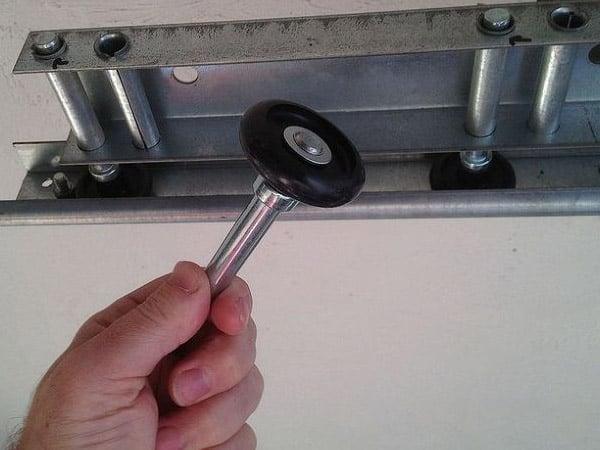Garage doors are an essential part of our homes, providing security and convenience. To ensure that your garage door operates smoothly and quietly, it relies on rollers that allow it to move up and down along the tracks. Over time, these rollers can wear out due to regular use and exposure to the elements. It’s crucial to know when to replace garage door rollers to avoid potential issues and costly repairs. In this comprehensive guide, we will explore how often you should replace garage door rollers and provide valuable insights to help you maintain a well-functioning garage door.

Understanding Garage Door Rollers
Before we delve into the replacement schedule, let’s understand the role of garage door rollers and their importance in the door’s operation.
Roller Types: Garage doors typically use two types of rollers – nylon rollers and steel rollers. Nylon rollers are quieter and require less maintenance, while steel rollers are more durable and suitable for heavier doors.
Function: The rollers are attached to the sides of the garage door and allow it to slide along the tracks during opening and closing. They bear the weight of the door, making it easier to operate manually or with a garage door opener.
Wear and Tear: With regular use, garage door rollers can experience wear and tear due to friction and exposure to dust, debris, and weather conditions. Worn-out rollers can cause the door to become noisy, uneven, or even get stuck.
When to Replace Garage Door Rollers
Now that we understand the role of garage door rollers, let’s explore how often they should be replaced to maintain a properly functioning garage door.
Step 1: Inspect Roller Condition
Perform regular visual inspections of your garage door rollers to check for signs of wear. Look for cracks, chips, or visible damage on the rollers. Also, check if the rollers are wobbling or not moving smoothly along the tracks.
Step 2: Listen for Noises
Listen for any unusual noises when operating your garage door. If you hear squeaking, grinding, or scraping sounds, it may indicate that the rollers are worn out and need replacement.
Step 3: Check Door Balance
Test the balance of your garage door by disconnecting the opener and manually operating the door halfway. If the door doesn’t stay in place and starts to slide down or shoot up, it could be a sign of worn-out rollers.
Step 4: Consider Frequency of Use
The frequency of garage door use also affects the lifespan of the rollers. If your garage door is used multiple times a day, the rollers may wear out faster compared to doors used less frequently.
Step 5: Age of Rollers
Generally, garage door rollers should be replaced every 5 to 7 years for nylon rollers and every 7 to 10 years for steel rollers. However, this can vary depending on the quality of the rollers and the usage of the door.
Replacing Garage Door Rollers
If you have noticed any signs of wear or have determined that it’s time to replace the garage door rollers, follow these steps for a smooth replacement process.
Step 1: Gather Supplies
Gather the necessary tools and supplies, including new rollers, a screwdriver, and safety gear.
Step 2: Safety First
Before starting the replacement, disconnect the power to the garage door opener to ensure safety.
Step 3: Remove Old Rollers
Use a screwdriver to remove the roller brackets and detach the old rollers from the garage door.
Step 4: Install New Rollers
Insert the new rollers into the roller brackets and secure them in place with the screwdriver.
Step 5: Test and Lubricate
After replacing the rollers, manually open and close the garage door to ensure smooth operation. Lubricate the rollers with a silicone-based garage door lubricant to reduce friction and noise.
Conclusion
Regularly inspecting and maintaining your garage door rollers is essential to ensure the smooth and efficient operation of your garage door. By knowing when to replace the rollers and following the steps for replacement, you can prolong the lifespan of your garage door and prevent unnecessary issues. Keep an eye out for signs of wear and listen for unusual noises to determine if the rollers need replacement. With proper care and timely replacements, you can enjoy a quiet and well-functioning garage door for years to come.



Leave a Reply